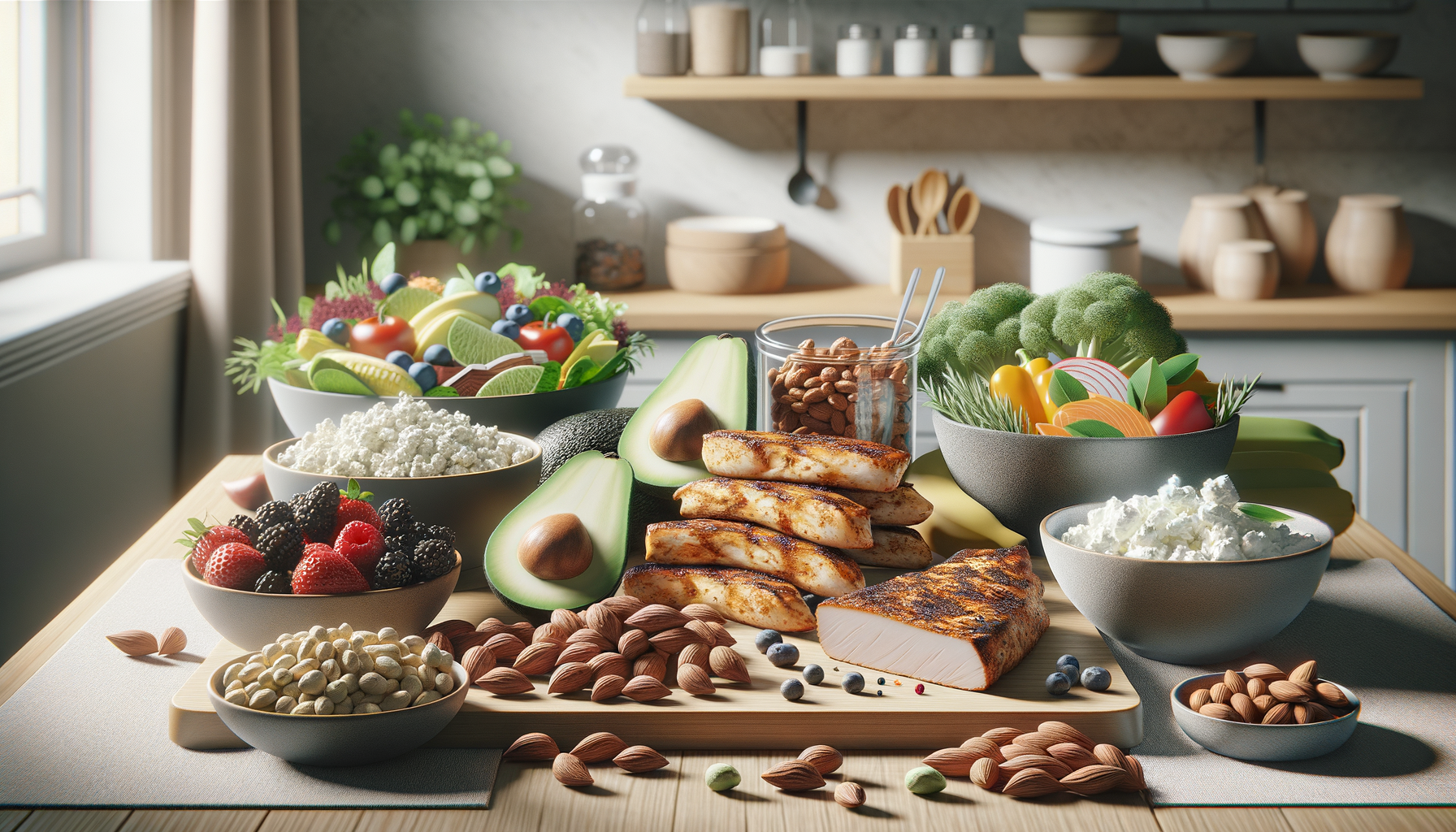
10 Low-Carb, Low-Sugar Snack Ideas That Support a Healthy Lifestyle Guide
Understanding Low-Carb Snacks
In recent years, the low-carb diet has gained popularity for its potential health benefits, including weight management and improved blood sugar control. Low-carb snacks play a vital role in maintaining this dietary lifestyle by providing quick energy and satisfying hunger without spiking blood sugar levels. These snacks are particularly beneficial for individuals looking to reduce their carbohydrate intake for health reasons, such as managing diabetes or promoting weight loss.
Low-carb snacks typically consist of foods that are high in protein and healthy fats, such as nuts, seeds, cheese, and meats. These foods not only help keep you full but also provide essential nutrients that support overall health. For example, nuts like almonds and walnuts are rich in omega-3 fatty acids, which are known for their heart-health benefits. Cheese, another popular low-carb snack, offers a good source of calcium and protein, making it a nutritious choice.
When selecting low-carb snacks, it’s essential to read labels and be mindful of hidden sugars and carbohydrates. Many pre-packaged snacks labeled as “low-carb” may still contain ingredients that are not ideal for a low-carb diet, such as added sugars or high-glycemic index carbohydrates. Opting for whole, unprocessed foods is a safer bet for maintaining a low-carb lifestyle.
Exploring Sugar-Free Snack Options
For those seeking to reduce sugar intake, sugar-free snacks provide a delightful solution without compromising taste or satisfaction. Reducing sugar consumption is crucial for maintaining stable blood sugar levels and preventing chronic diseases such as diabetes and heart disease. Sugar-free snacks are not only beneficial for individuals with diabetes but also for anyone looking to adopt a healthier eating pattern.
Common sugar-free snack options include fresh fruits and vegetables, which naturally contain minimal sugar while providing essential vitamins and minerals. Berries, for instance, are low in sugar and high in antioxidants, making them a perfect snack choice. Vegetables like celery and cucumber can be paired with hummus or a sugar-free dip for a crunchy, satisfying treat.
Another popular sugar-free snack option is yogurt, particularly when choosing varieties that are unsweetened or sweetened with natural alternatives like stevia or monk fruit. Yogurt provides probiotics that support gut health, along with protein and calcium. It’s important to choose brands that do not contain added sugars or artificial sweeteners to ensure you’re getting the healthiest option available.
Creative Healthy Snack Ideas
Healthy snacking doesn’t have to be boring or repetitive. With a little creativity, you can enjoy a variety of delicious snacks that are both nutritious and satisfying. The key to healthy snacking is to balance macronutrients—protein, fats, and carbohydrates—while incorporating a range of vitamins and minerals.
One creative snack idea is to make your own trail mix by combining nuts, seeds, and dried fruits. This allows you to control the ingredients and customize the flavors to suit your preferences. For a savory twist, try adding spices like cinnamon or chili powder to your mix.
Another innovative option is to prepare vegetable chips using kale, zucchini, or sweet potatoes. Simply slice the vegetables thinly, season them with your favorite herbs, and bake until crispy. These homemade chips are a healthier alternative to store-bought versions and can be tailored to your taste preferences.
For a sweet yet healthy treat, consider making fruit parfaits with layers of yogurt, fresh fruit, and granola. This snack offers a balance of protein, fiber, and natural sugars, making it an ideal choice for a midday energy boost.
Comparing Low-Carb and Sugar-Free Snacks
While both low-carb and sugar-free snacks aim to support healthier eating habits, they focus on different nutritional aspects. Low-carb snacks primarily reduce carbohydrate intake, which can be beneficial for weight management and blood sugar control. In contrast, sugar-free snacks eliminate or significantly reduce sugar content, which is crucial for preventing spikes in blood sugar and reducing the risk of chronic diseases.
Low-carb snacks often include foods high in protein and healthy fats, such as meats, cheeses, and nuts. These snacks are satisfying and provide sustained energy without the quick spikes and crashes associated with high-carb foods. On the other hand, sugar-free snacks focus on minimizing sugar content while still offering flavor and satisfaction. These can include fruits, vegetables, and products sweetened with natural alternatives like stevia.
It’s worth noting that some snacks can be both low-carb and sugar-free, such as nuts or cheese. These dual-purpose snacks are convenient for those adhering to stricter dietary plans that require both low carbohydrate and low sugar intake.
Practical Tips for Choosing Healthy Snacks
Choosing healthy snacks involves more than just picking items labeled as “low-carb” or “sugar-free.” It’s essential to understand the nutritional content and how it fits into your overall diet. Here are some practical tips to help you make informed decisions:
- Read labels carefully to identify hidden sugars and carbs, especially in processed snacks.
- Opt for whole, unprocessed foods whenever possible, as they are typically more nutrient-dense.
- Plan your snacks ahead of time to avoid last-minute, less healthy choices.
- Incorporate a variety of snacks to ensure a balanced intake of nutrients.
- Listen to your body’s hunger cues and snack only when truly hungry.
By following these tips, you can enjoy a range of delicious snacks that support your dietary goals and contribute to a healthier lifestyle.